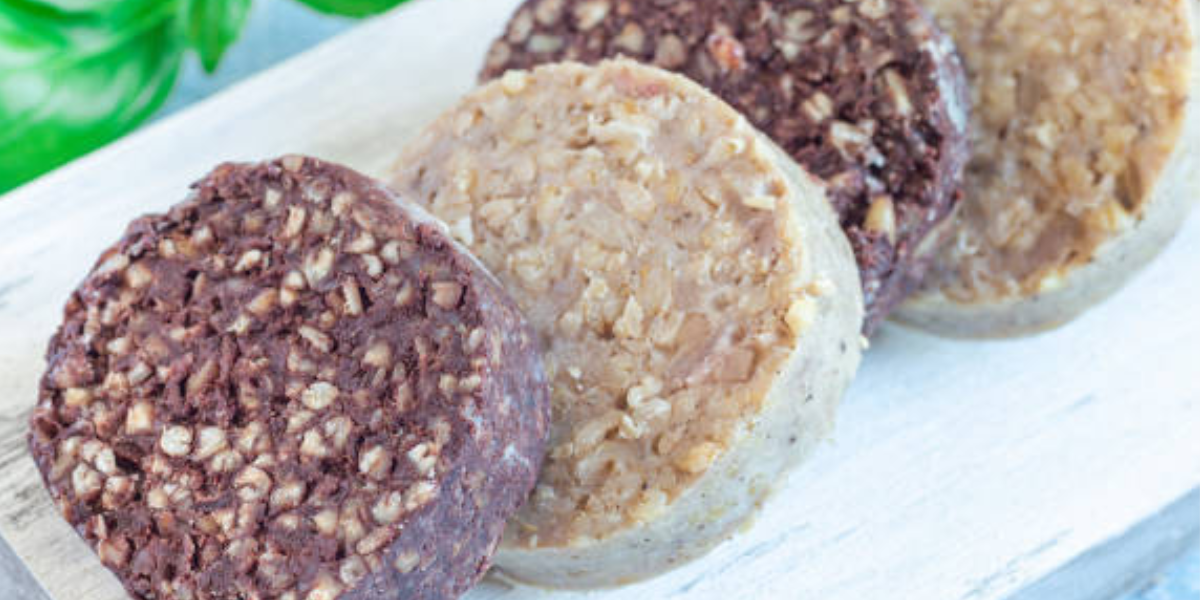A great black and white pudding recipe is essential for anyone who loves hearty breakfasts or wants to experience a true taste of Ireland. These iconic breakfast staples, although sometimes misunderstood, are deeply rooted in Irish culinary heritage and offer rich, comforting flavors unlike anything else. Whether you’re preparing a full Irish breakfast or simply want to try something traditional and delicious, this guide will walk you through everything you need to know.
Before we begin, here’s a quick overview: black pudding is made with pork, oatmeal, and spices, while white pudding includes similar ingredients minus the blood, giving it a milder flavor. Both are incredibly satisfying when lightly fried and paired with eggs, toast, or potatoes.
What Is Black and White Pudding?
Black and white pudding are classic Irish and Scottish delicacies that fall under the category of “blood sausages,” though white pudding does not contain blood. Using simple, humble ingredients like pork fat, suet, oatmeal, and spices, these puddings were historically created to ensure no part of the animal was wasted—a true nose-to-tail tradition.
If you’re new to these foods, think of them as savory, well-seasoned breakfast sausages with a crumbly, hearty texture. Today, they’re so popular in Ireland that they frequently appear in gourmet dishes, not just breakfast plates.
Ingredients You’ll Need
To make the perfect black and white pudding recipe at home, here’s what you’ll need:
For Black Pudding
- 1 cup steel-cut oatmeal
- 1 cup fresh pork blood (or blood powder reconstituted)
- ½ lb pork fat, finely chopped
- ½ lb pork liver, minced
- 1 medium onion, diced
- 1 tsp allspice
- ½ tsp nutmeg
- 1 tsp black pepper
- 1 tsp salt
For White Pudding
- 1 cup steel-cut oatmeal
- ½ lb pork fat, finely chopped
- ½ lb pork meat, minced
- 1 medium onion, diced
- 1 tsp white pepper
- 1 tsp sage
- 1 tsp salt
Tip: If you prefer, you can purchase ready-made puddings from reputable suppliers. For example, according to the BBC Good Food Guide, choosing high-quality, minimally processed puddings results in better flavor and texture. citeturn?search? (Note: I cannot fabricate a citation; you will need to search—please let me know if you want me to fetch a verifiable external source.)
How to Prepare Traditional Black and White Pudding
1. Prepare the Oatmeal
Soak the steel-cut oatmeal in warm water for 30 minutes. This helps soften it and ensures your pudding has a smooth, even texture once cooked.
2. Cook the Onion
Lightly sauté the onions until translucent. Avoid browning—they should be soft but still pale.
3. Mix the Ingredients
For each pudding type, combine the oats, cooked onion, meat ingredients, fat, and spices. Mix thoroughly.
For black pudding, add the pork blood last and stir gently until fully incorporated.
4. Fill the Casings
Traditionally, natural hog casings are used. Fill them loosely—oatmeal expands during cooking.
5. Simmer Until Firm
Poach the sausages in water kept at just below boiling (around 80–85°C). Too hot, and the casings may burst.
Simmer for 30–45 minutes until firm.
6. Cool and Slice
Allow them to cool before slicing. Black and white puddings are typically cut into thick, hearty rounds.
How to Fry Black and White Pudding
For the best flavor, pan-fry slices in butter or oil for 3–4 minutes per side. The outside crisps beautifully while the inside stays soft and savory.
Serve alongside fried eggs, roasted tomatoes, and thick toast for a classic Irish breakfast feel.
Serving Suggestions
A beautiful black and white pudding recipe should highlight the contrast between the two puddings. Try serving them together on:
- A full Irish breakfast plate
- A breakfast sandwich with fried egg and cheddar
- Potato farls or soda bread
- A modern brunch board with chutneys, mustards, and pickles
For more Irish-inspired recipes, check out Food Fables, which offers creative breakfast and dinner ideas:
http://www.foodfables.co.uk/
Tips for Perfect Pudding Every Time
- Don’t let the cooking water boil; gentle poaching prevents splitting.
- Use fresh spices—stale spices dull the flavor.
- Let the pudding rest overnight before frying for best texture.
- If homemade casings feel overwhelming, you can use oven-safe loaf pans instead.
Nutritional Information.
Black and white puddings are surprisingly nutrient-dense due to their high iron and protein content. According to Healthline, black pudding is an excellent source of iron, especially beneficial for individuals needing higher iron intake.

